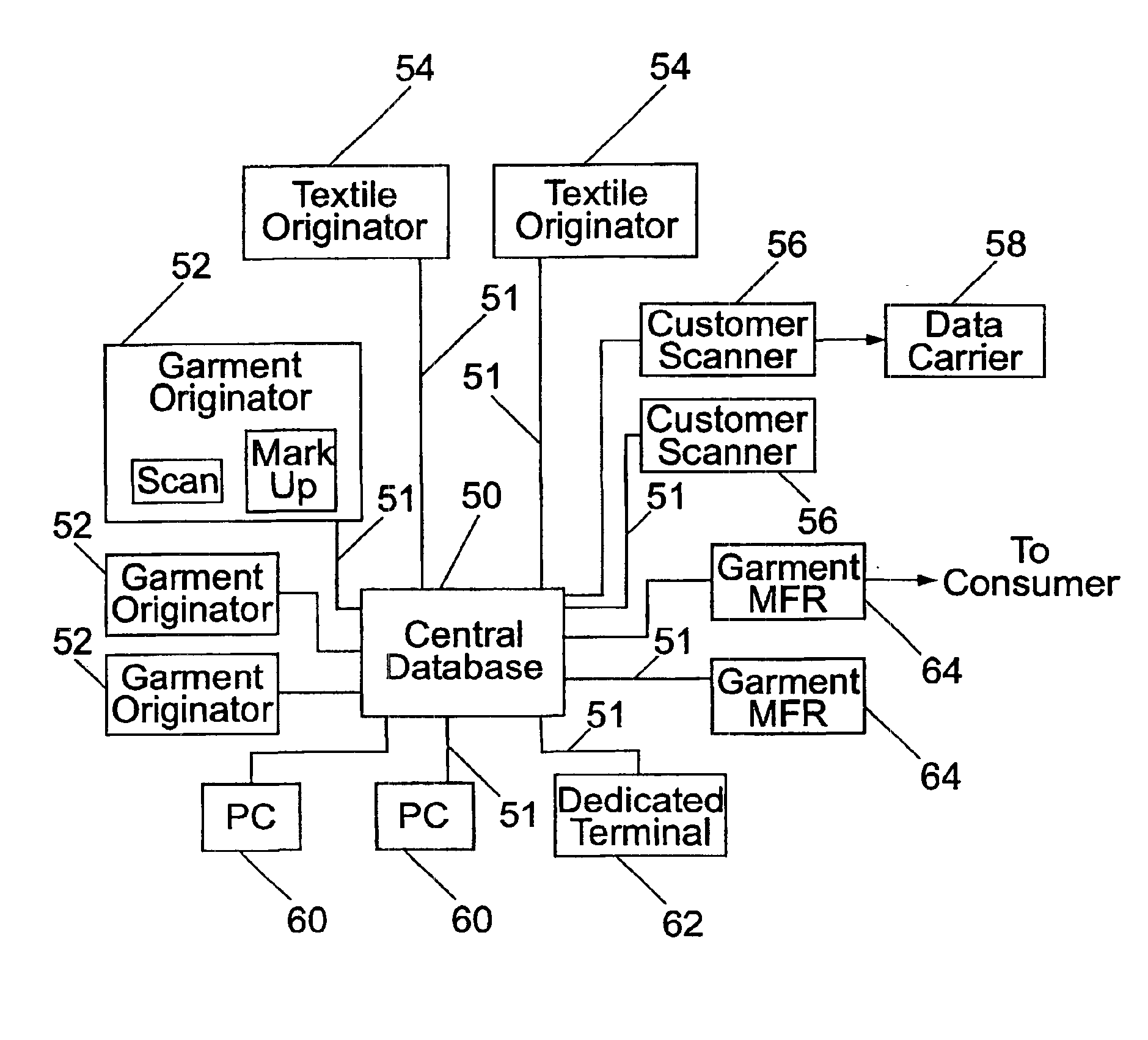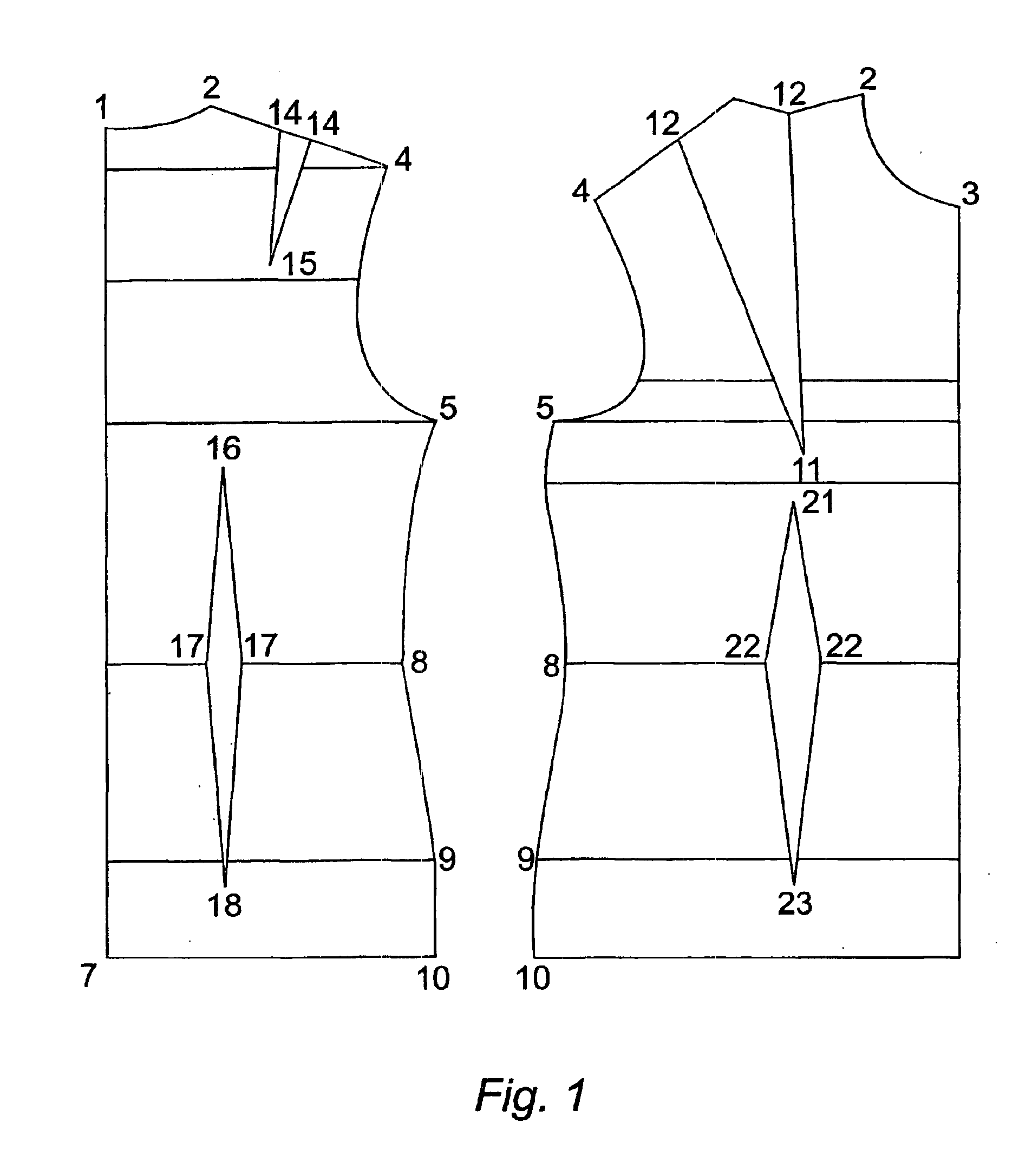Production and visualization of garments
a technology for visualisation and garments, applied in the field of production and visualisation of garments, can solve the problems of not meeting the requirements, unable to ensure that the modified garment will preserve the design or style of the base garment, and none of the prior proposals have satisfactorily addressed the practical issues involved in providing an integrated suite of technologies
- Summary
- Abstract
- Description
- Claims
- Application Information
AI Technical Summary
Benefits of technology
Problems solved by technology
Method used
Image
Examples
Embodiment Construction
[0043]In the preferred forms of the invention, the method comprises core steps, followed by one or more options, the core steps being:[0044]1. Obtaining a garment design to fit a person, tailor's dummy or a mannequin of a first size and shape (“The Model”), the garment design comprising a number of pattern pieces.[0045]2. Capturing or creating a 3D image of The Model unclothed or in underclothes or a leotard.[0046]3. Capturing or creating a 3D image of The Model wearing the design. The 3D image of the model wearing the design may be created by means of virtual dressing of the model using a computer program to construct a representation of the clothing draped to fit the Model.[0047]4. Adjusting the pose of The Model in the two 3D images to be the same, if the pose differs.[0048]5. Creating a 3D representation of the garment, by removing the model from the 3D image of the model wearing the garment.[0049]6. Identifying on each pattern piece on the captured or created 3D representation ...
PUM
 Login to View More
Login to View More Abstract
Description
Claims
Application Information
 Login to View More
Login to View More - R&D
- Intellectual Property
- Life Sciences
- Materials
- Tech Scout
- Unparalleled Data Quality
- Higher Quality Content
- 60% Fewer Hallucinations
Browse by: Latest US Patents, China's latest patents, Technical Efficacy Thesaurus, Application Domain, Technology Topic, Popular Technical Reports.
© 2025 PatSnap. All rights reserved.Legal|Privacy policy|Modern Slavery Act Transparency Statement|Sitemap|About US| Contact US: help@patsnap.com



